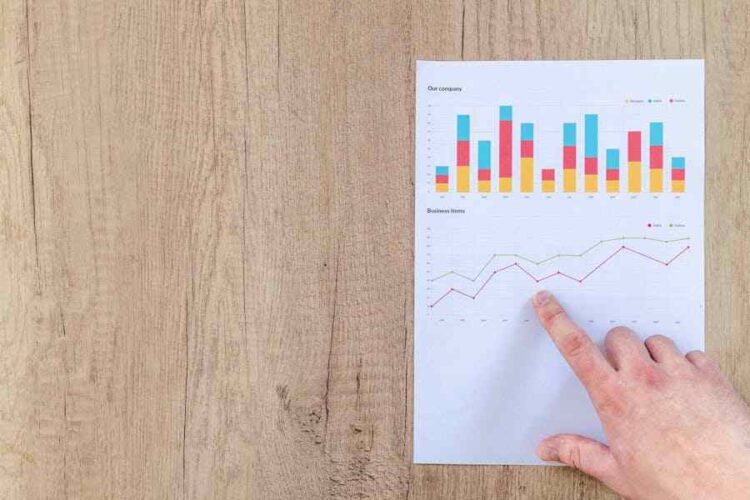You are standing at a decision point. You see a sign saying ‘bankruptcy’ and another saying ‘insolvency,’ and you’re unsure which direction to choose. No need to be concerned. Break down these overwhelming financial terms to lead you through the complicated labyrinth of economic hardship. Investigate reasons, impacts, and lawful outcomes, equipping you with the information necessary to make an informed choice.
Definition Of Bankruptcy And insolvency
Understanding bankruptcy insolvency situations necessitates comprehension of two distinct financial states. Bankruptcy is an organized procedure that people might experience if they cannot settle their debts or taxes. Insolvency occurs when debts are more significant than assets.
Recognizing that bankruptcy can help with insolvency is crucial, but there are other answers.
Even though they both revolve around financial difficulties, bankruptcy proceedings are a lawful procedure started by submitting a bankruptcy petition, whether willingly or unwillingly, and enlisting experts such as the Fayetteville Bankruptcy Attorney.
Legal Distinctions between Bankruptcy And Insolvency
Insolvency happens when a party’s liabilities exceed its assets, resulting in an inability to fulfill financial duties. This financial hardship is not a legal situation but an economic one.
Alternatively, people with financial difficulties or to whom money is owed can initiate a legal bankruptcy proceeding to deal with unmanageable debt. Insolvency pertains to the economic state, whereas bankruptcy provides a legal solution to deal with this condition.
Understanding these distinctions equips you to navigate financial challenges more effectively, whether dealing with personal finances or corporate affairs.
The process Of Declaring Bankruptcy
Based on your financial state, you may file for bankruptcy through a liquidation process where your assets are sold to pay off debts or through a reorganization plan to create a manageable repayment schedule.
In any case, bankruptcy filing offers instant relief from relentless creditors through the protection of bankruptcy laws. It’s a complex process requiring careful analysis of your financial position, potential alternatives, and consequences.
The Insolvency Resolution Process
You must begin an insolvency resolution procedure to manage your company’s insolvency. This procedure could include rearranging outstanding debts, bargaining with creditors, and possibly selling off the debtor’s assets through your efforts.
Considering debt relief options is crucial when handling either cash flow insolvency or balance sheet insolvency to fulfill debt obligations. If your cash flow is low and you can’t make debt payments, reshaping your existing debts may be an option.
Financial Implications Of Bankruptcy And Insolvency
Dealing with bankruptcy and insolvency will probably have significant financial consequences for you. At first, you may be cash flow insolvent and struggle to pay off immediate debts. Alternatively, if your total debts exceed assets, you may be a balance sheet insolvent.
Bankruptcy can last up to six years and impact your credit score and loan eligibility. The distinction between insolvency and bankruptcy primarily rests on legal procedures, yet both involve a person unable to repay debts with assets.
Navigating Personal Bankruptcy And Insolvency
Insolvency, a state of financial distress where liabilities exceed debtors’ assets, can lead to bankruptcy, a legal process to resolve unpaid debts. The distinction between bankruptcy and insolvency lies in their implications, immediate financial obligations, and resolutions.
Insolvency reflects your financial situation and can be temporary if you appropriately manage to pay creditors. In contrast, bankruptcy is a court-ordered status that can impact your credit and economic standing.
Navigating personal bankruptcy and insolvency involves careful consideration of your financial distress and strategic planning to mitigate damage. Exploring all possible avenues before declaring bankruptcy is crucial, as its effects are far-reaching and long-lasting.
Coping With Bankruptcy And Insolvency For Businesses
Understanding the legal ramifications and possible solutions is crucial when dealing with bankruptcy and insolvency in business.
Poor money management may lead to a financial crisis, leaving your business unable to meet its financial commitments. Maintaining a robust cash flow is essential for a solid financial position on your balance sheet.
Not quickly converting business assets into money can often result in cash flow disruptions. If you can’t pay debts, you might have to offload assets to cover your obligations. However, there are other options besides declaring bankruptcy.
Reorganizing how your business operates can lead to a more stable financial structure. Your goal should ultimately be safeguarding your possessions, sustaining a good income, and meeting all your loan responsibilities.
Last Words
Ironically, it’s in the depths of financial distress that you’ve gained the greatest clarity. You’re now well-versed in bankruptcy and insolvency, comprehending their differences, processes, and implications. Indeed, financial hardship has proven an unlikely teacher. So, face the irony head-on and seize control of your financial destiny.










